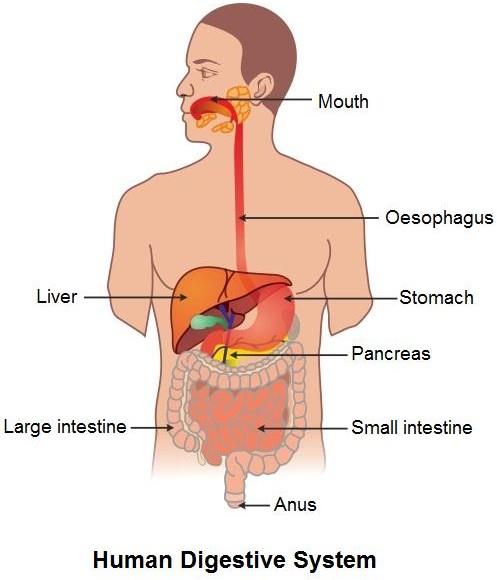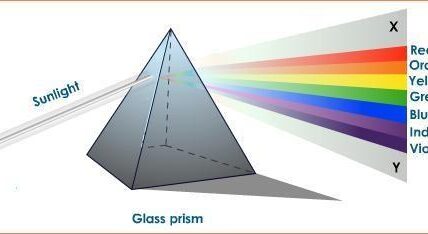Nutrition in Animals
INTRODUCTION
Animals get their food from plants, either directly by eating plants or indirectly by eating animals that eat plants. Some animals eat both plants and animals. Recall that all organisms including humans require food for growth, repair and functioning of the body. Animal nutrition includes nutrient requirement, mode of intake of food and its utilisation in the body
To minimize the entropy, to maintain the body structure and its growth living being requires continuous input of energy and matter. Primary source for the both is food (or nutrient). Obtaining such substances is called.
The Process of Nutrition and its examples
Animals have highly evolved digestive mechanism that includes two basic components:
- Alimentary canal: Long, hollow, tubular structure consisting of various organs for digestion.
- Digestive glands: They secrete enzymes / hormones which help in digestion.
Digestion in animals consists of following steps:
Ingestion: The process of intake of food.
- Digestion: It is the breakdown of large and complex molecules into simpler, smaller and soluble forms.
- Absorption: Taking up of the digested food through intestinal wall to blood.
- Assimilation: In this process absorbed food is taken by body cells.
- Egestion: The process by which undigested matter is expelled out.
Nutrition- Ways of Taking in Food
- The mode of taking in food by an organism and its utilisation by the body is called nutrition.
- The process of taking in food inside the body is called ingestion.
- Different animals have different feeding habits; their manner of taking in food also differs.
| Animals | Ways of Taking in Food |
| Frog, chameleon, wall lizard | Use tongue to catch insects. |
| Bee, butterfly, humming bird | Suck nectar from flowers of plants. |
| Hydra | Uses tentacles with sting cells to kill the prey and put it in the mouth. |
| Butterfly | Long feeding tube to suck nectar from flowers of plants. |
| Snakes | Swallow the whole animal in one go. |
| Aquatic animals | Filter tiny food particles floating nearby and feed upon them. |
Digestion in Human Beings
- The breakdown of complex components of food such as carbohydrates, proteins and fats into simpler substances such as glucose, amino acids and fatty acids respectively is called digestion.
- Digestion in human beings is carried out in the alimentary canal of the digestive system.
The alimentary canal is about 8-9 metres long and consists of buccal cavity, oesophagus, stomach, small intestine, large intestine, rectum and anus.

Passage of Food in the Alimentary Canal
- Food is crushed and broken into small particles in the mouth with the help of teeth. It is then mixed with saliva.
- This chewed soft food then passes through the oesophagus in a wave-like movement (peristalsis) and moves to the stomach.
- In the stomach, food mixes with gastric juices and HCl.
- From the stomach, the food moves into the small intestine.
- In the small intestine, carbohydrates, proteins and fats are broken down with the help of juices secreted by the pancreas, the liver and the small intestine itself.
- The broken down food is then absorbed by small projections present on the inner walls of the intestine called villi.
- Finally, the food moves into the large intestine where most of the water is removed from the food and is then thrown out of the body through the anus.
Digestion in Grass-eating Animals
- Cows and buffaloes fall in the category of grass-eating animals.
- They quickly swallow the grass and store it in the rumen, where the food gets partially digested and is termed as cud.
- The cud returns to the mouth in small lumps and the animal chews it. This process is termed as
rumination, and these animals are called ruminants.
Feeding and Digestion in Amoeba
- Amoeba is a unicellular microbe which has no definite shape, mouth or digestive system.
- It constantly changes its shape and position in order to obtain food.
- When it senses food, it pushes out pseudopodia or finger-like projections around the food and engulfs it.
- The food gets trapped in food vacuoles.
- In food vacuoles, the digestive juices are secreted which act on the food, breaking it into simpler substances.
- Gradually, the digested food gets absorbed. These absorbed substances are used for growth, maintenance and multiplication.
- The undigested food is expelled by the vacuole.
Small Intestine length
It is a coiled and narrow tube having 3 regions: duodenum, jejunum, and ileum. it is six to seven metres long and 2.5 cm in diameter.
Duodenum : Duodenum is the initial part of the small intestine. it is ‘C’ shaped, into which the bile and the pan creatic ducts open through a common bile duct.
Duodenal gland : Present mainly in duodenum; secretes mucous.
Jejunum : The part next to the duodenum is jejunum. It is a short region of small intestine before ileum.
Ileum : It is the longest part of the small intestine. The major part of the process of digestion of food takes place in the small intestine. The inner lining of the small intestine is produced into a number of finger-like projections called villi. Each villus is covered by a single layer of epithelium and contains blood capillaries and a small lymph vessel.
Highly organised system of blood capillaries up to villi for the transportation of absorbed food.
The villi increase the surface area for absorption. In between the villi are glandular pits having glands which secrete the digestive enzymes into the lumen of the intestine.
Mind Map


